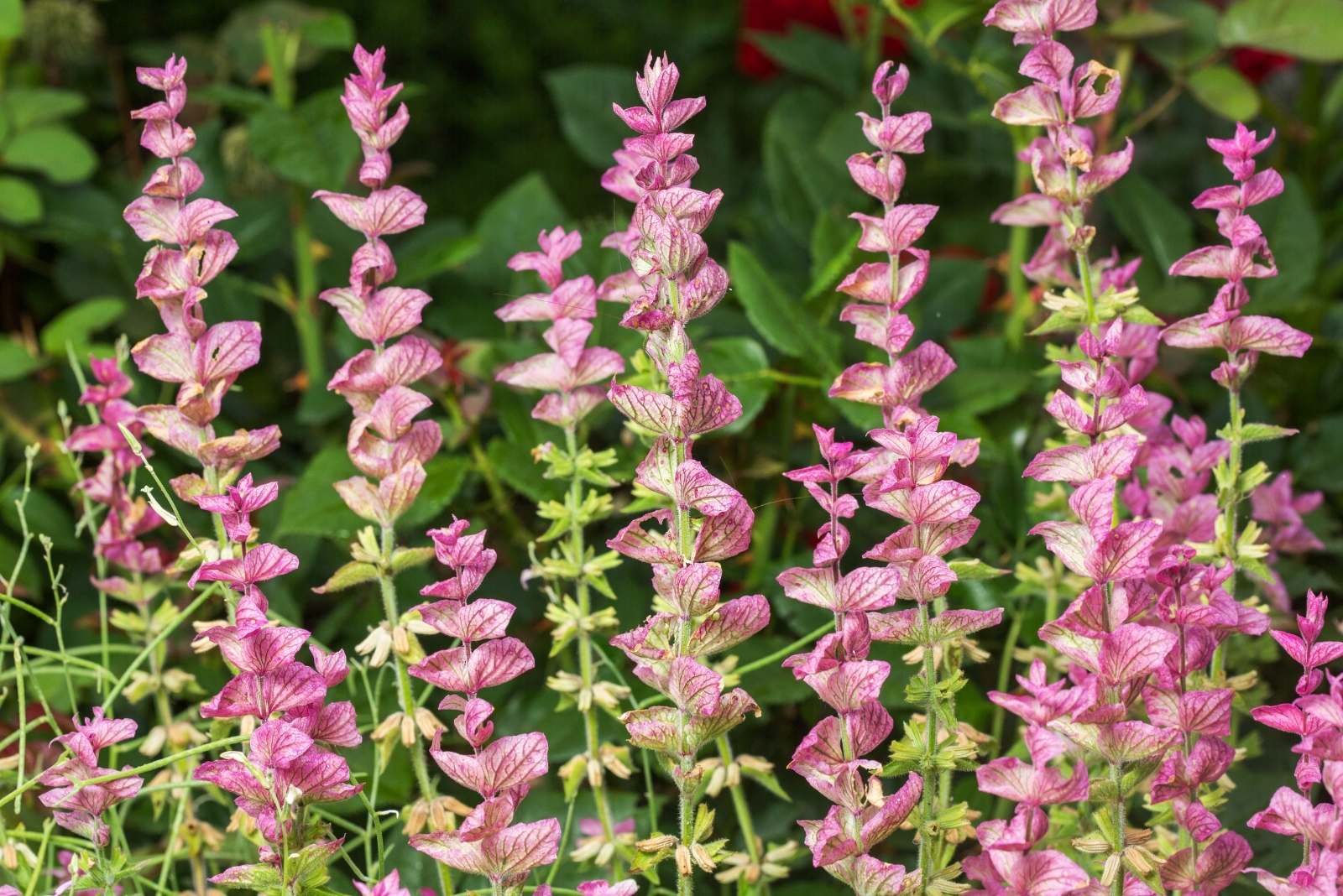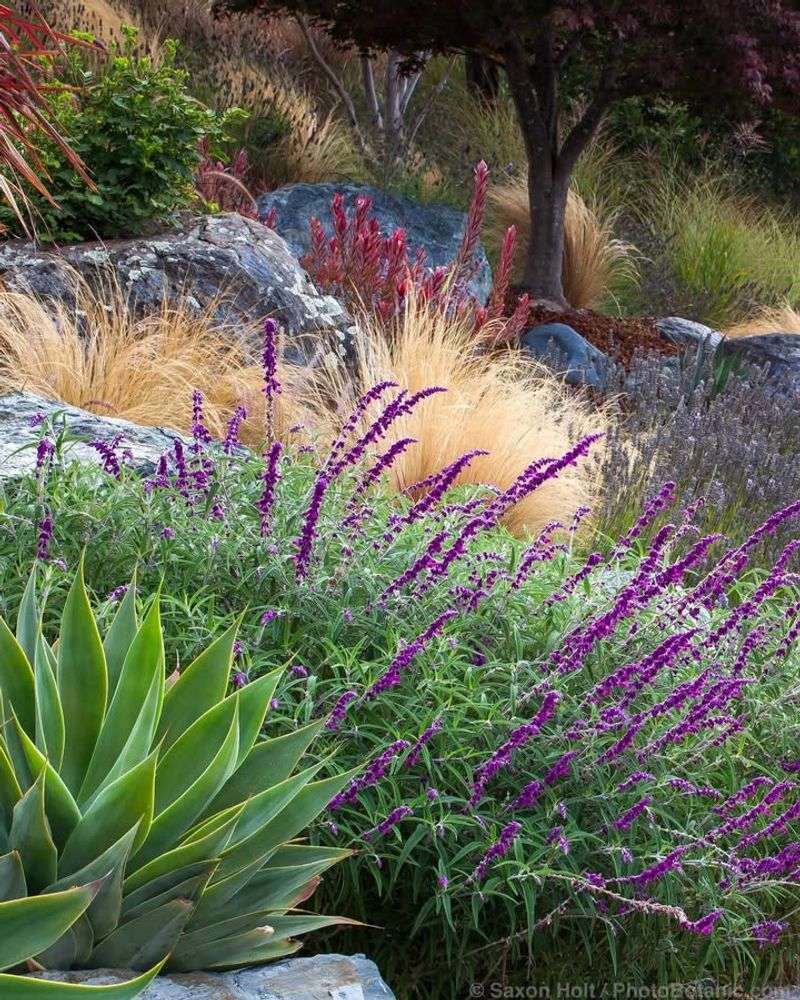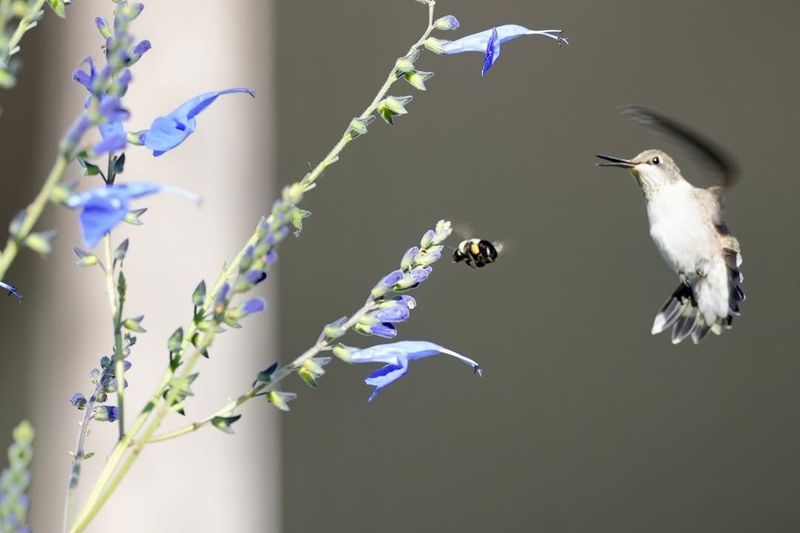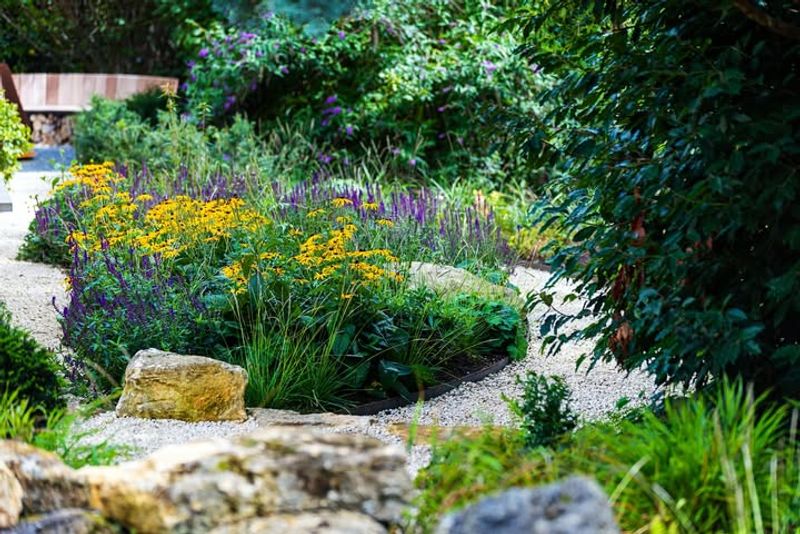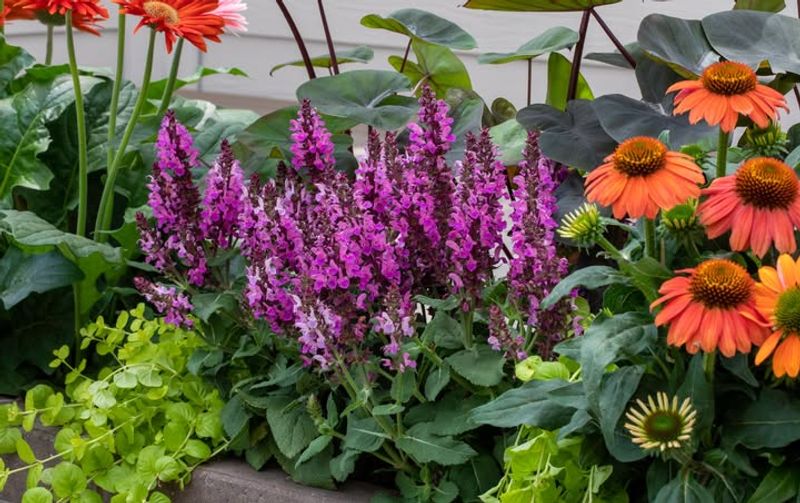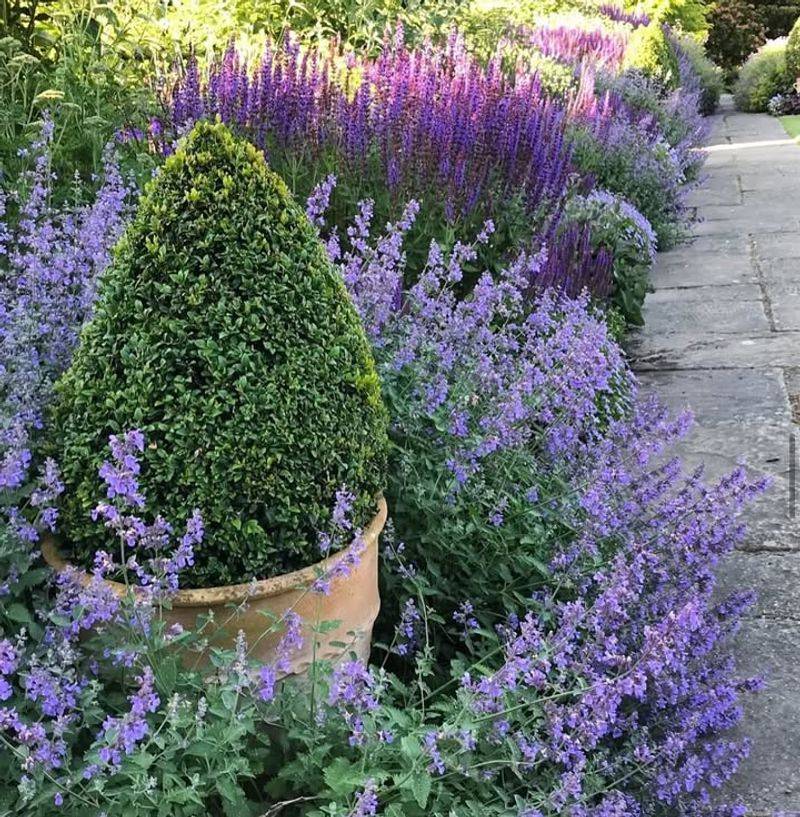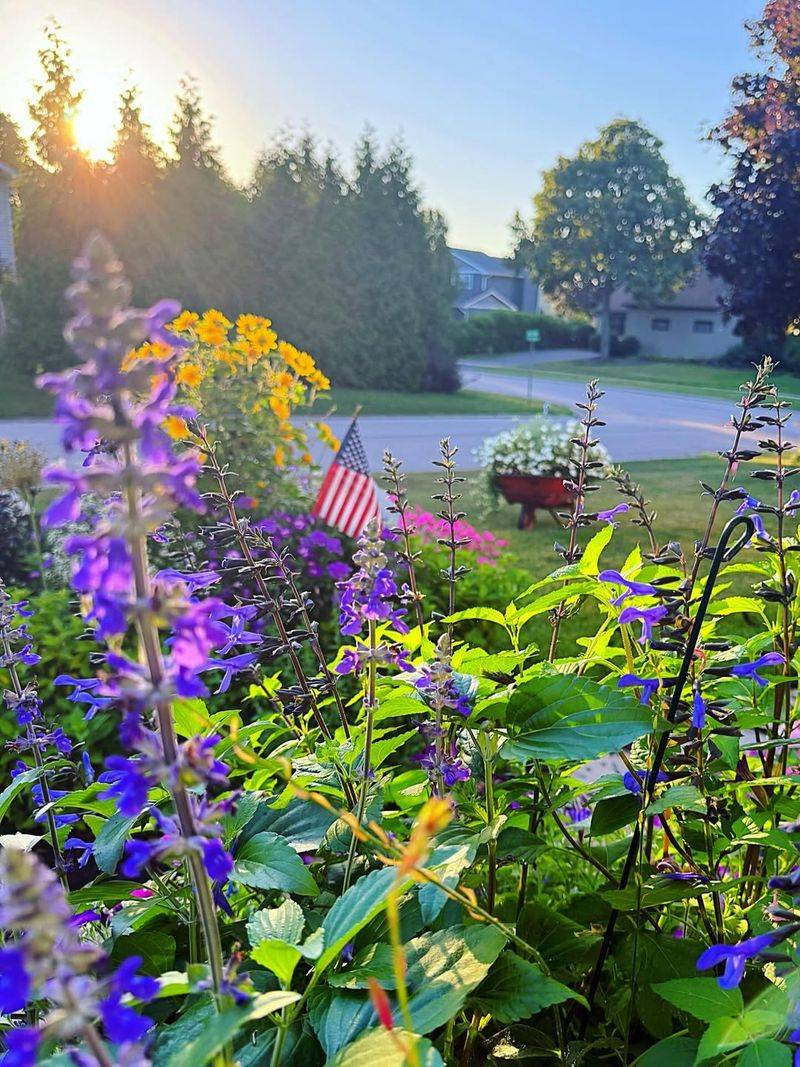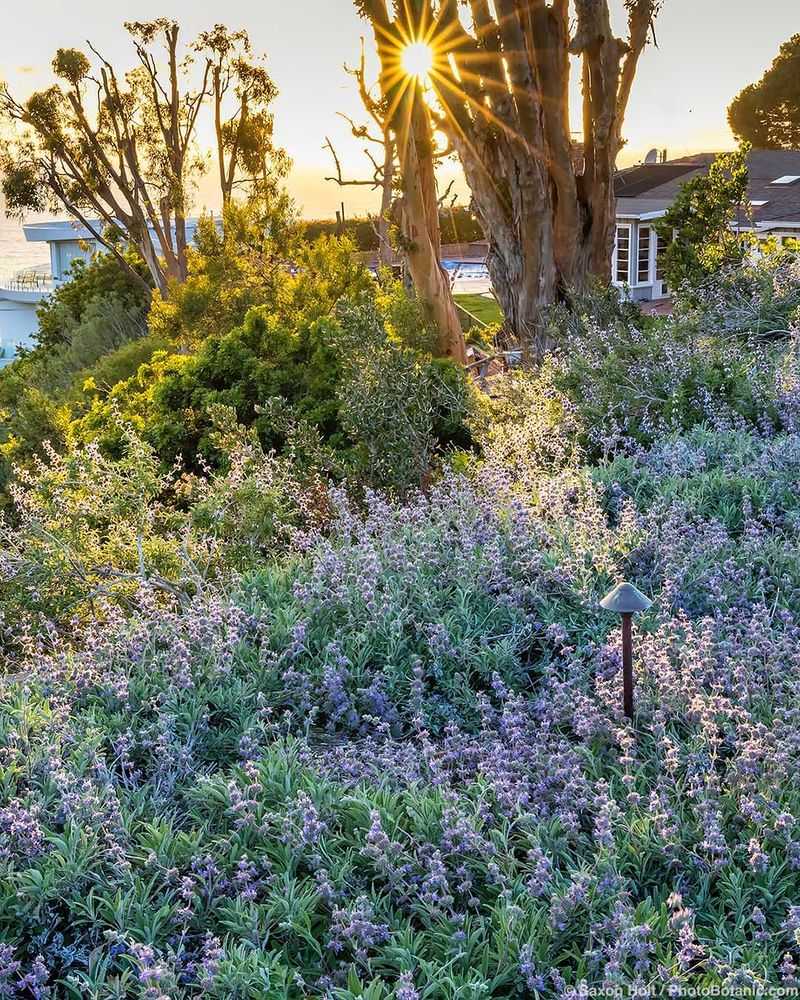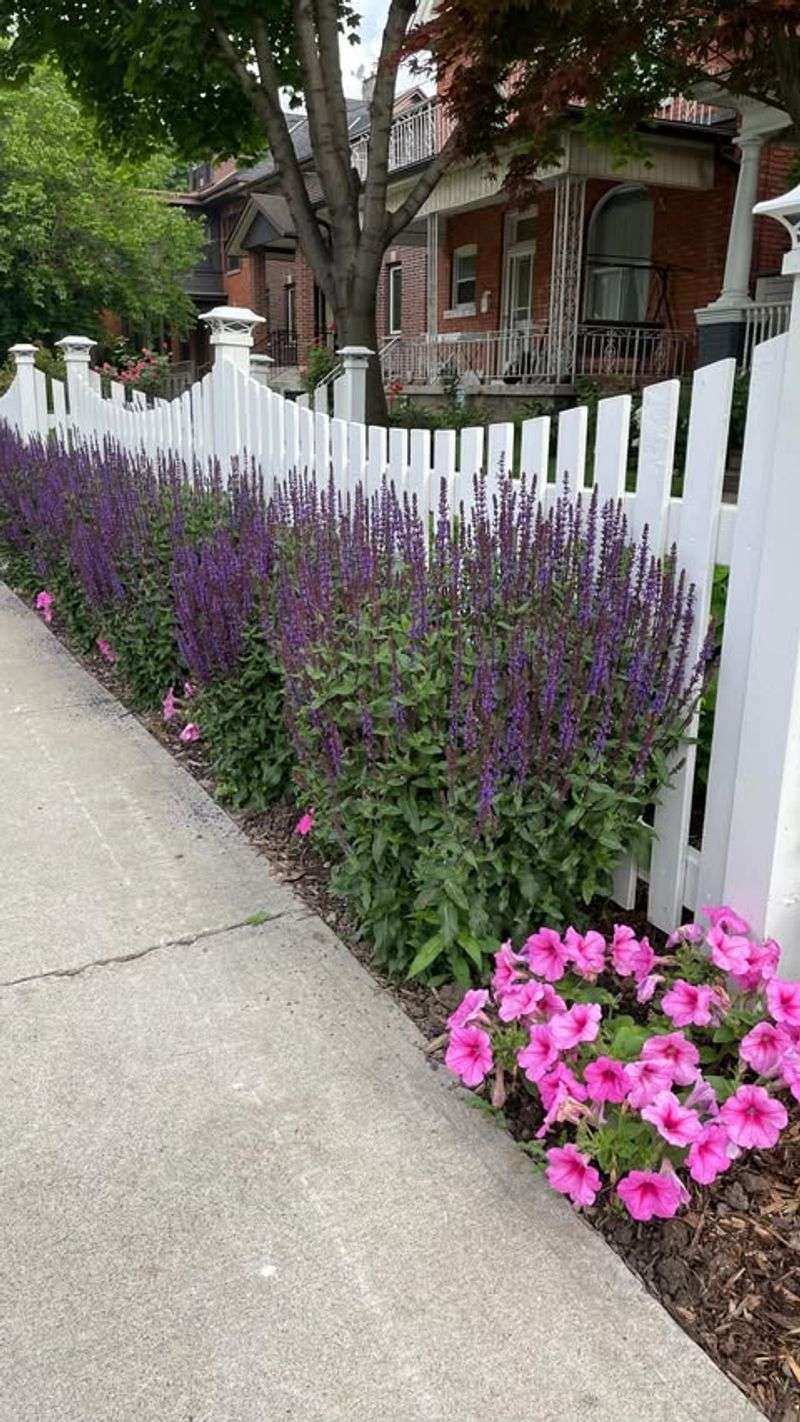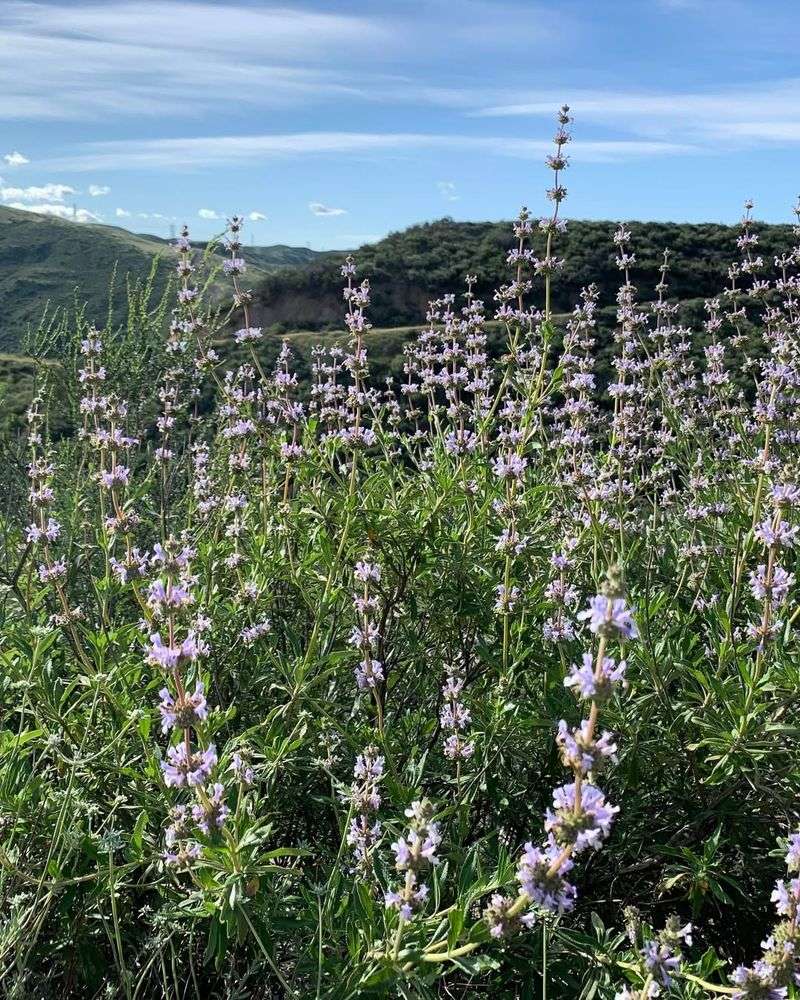Late season salvias are a hidden gem for California gardens, adding color when many plants are winding down. They bring texture, fragrance, and a touch of magic to any outdoor space.
Gardeners who know how to use them create vibrant, lasting displays. Here are 9 creative ways to incorporate salvias into your California garden design.
1. Drought-Tolerant Borders
Create stunning borders that thrive with minimal water across California’s varied climate zones. Mexican sage and autumn sage varieties maintain their beauty even as temperatures fluctuate in fall.
The silver-gray foliage adds texture while their purple, red, or blue blooms provide dramatic color contrast. Perfect for Southern California gardens where water conservation matters most!
2. Pollinator Paradise
Transform your yard into a buzzing haven that supports California’s native wildlife ecosystem. Late-blooming salvias provide crucial nectar sources when other flowers have disappeared.
Position these aromatic beauties near windows to enjoy the parade of hummingbirds, butterflies, and bees. Northern California gardeners particularly appreciate how these plants sustain pollinators through early fall frosts.
3. Woodland Edge Plantings
Brighten those tricky transition zones between sunny gardens and shaded areas. Woodland salvias like Salvia guaranitica thrive in these dappled light conditions throughout California’s coastal regions.
Their tall, architectural stems create vertical interest while their deep blue flowers pop against autumn’s golden hues. Central California gardeners find these perfect for creating natural-looking garden boundaries.
4. Container Combinations
Liven up your patio with strategic salvia pairings that extend the season. Compact varieties like ‘Hot Lips’ or ‘Ember’s Wish’ create instant impact in containers across California’s urban spaces.
Mix with ornamental grasses and trailing sedums for textural contrast. Bay Area container gardeners particularly love how these combinations withstand fog and maintain color through December.
5. Mediterranean Garden Vignettes
Create authentic Mediterranean scenes by pairing salvias with olive trees, lavender, and rosemary. These plant communities naturally thrive together in California’s climate and share similar water needs.
The silver-blue foliage creates a cohesive look while late-blooming salvias add seasonal interest. Wine country gardeners throughout Napa and Sonoma valleys embrace this aesthetic for its beauty and practicality.
6. Cutting Garden Rows
Plant dedicated rows for endless autumn flower arrangements. Varieties like Salvia leucantha (Mexican Bush Sage) produce long-stemmed blooms perfect for California floral designers and home enthusiasts.
Their velvety purple spikes last surprisingly long in vases and bring garden freshness indoors. Sacramento Valley gardeners find these particularly productive in late season when grown in full sun positions.
7. Slope Stabilizers
Tackle erosion-prone hillsides with deep-rooted salvias that hold soil while looking spectacular. Their extensive root systems create natural retaining structures throughout California’s hilly terrain.
Varieties like white sage and Cleveland sage establish quickly on difficult slopes. Los Angeles homeowners particularly value these natives for fire resistance and their ability to thrive on challenging south-facing slopes.
8. Color Echo Designs
Create visual harmony by repeating salvia colors throughout your garden’s fall palette. Place ‘Black and Blue’ salvia near blue fescue or pair burgundy varieties with similarly colored Japanese maples.
This designer technique creates cohesion across California landscapes during seasonal transitions. San Diego gardeners especially appreciate how these color echoes maintain visual interest despite minimal rainfall.
9. Fragrant Pathway Plantings
Line garden paths with aromatic salvias that release delightful scents when brushed against. Pineapple sage and fruit-scented varieties create sensory experiences throughout California garden walks.
Position them where evening strolls will release their fragrance as temperatures cool. Santa Barbara gardeners particularly cherish these aromatic corridors for their ability to perfume ocean breezes year-round.

